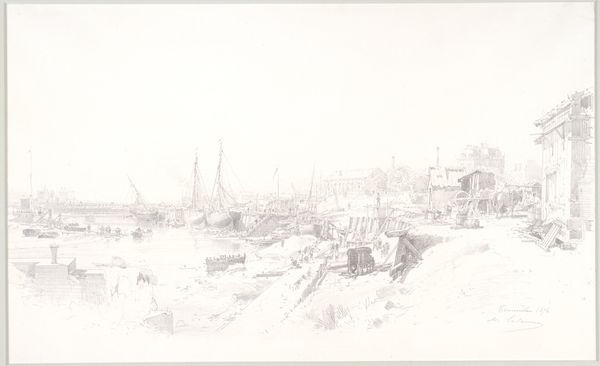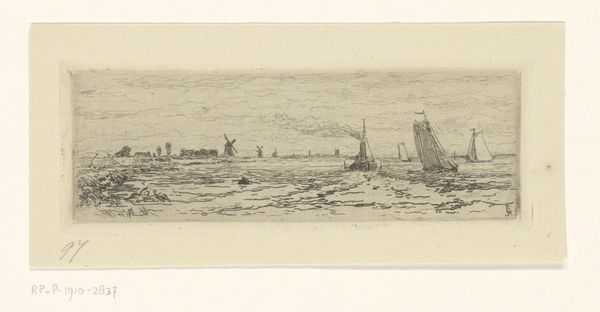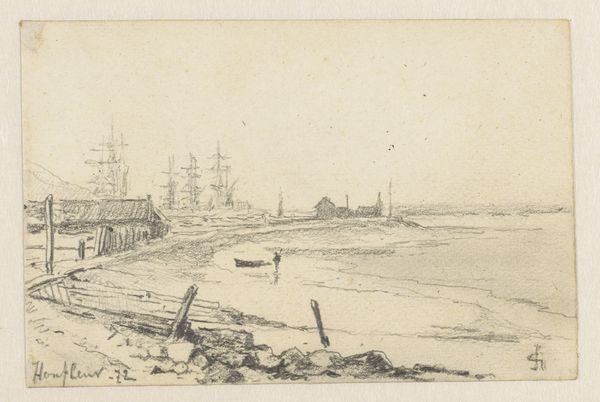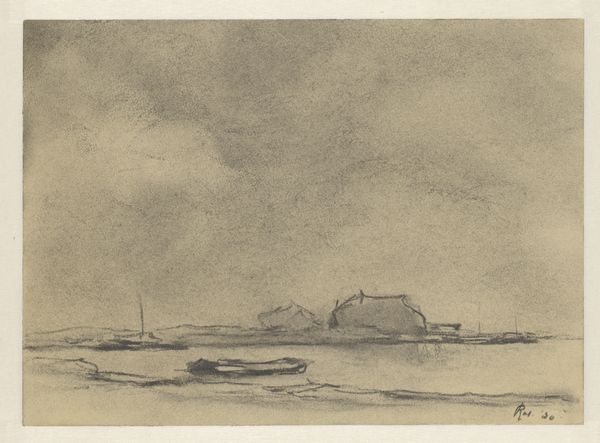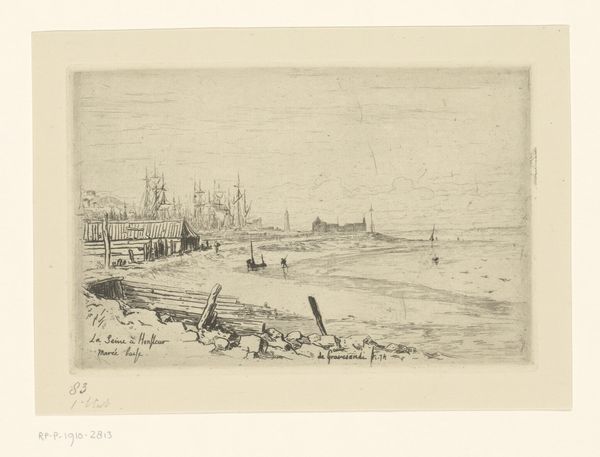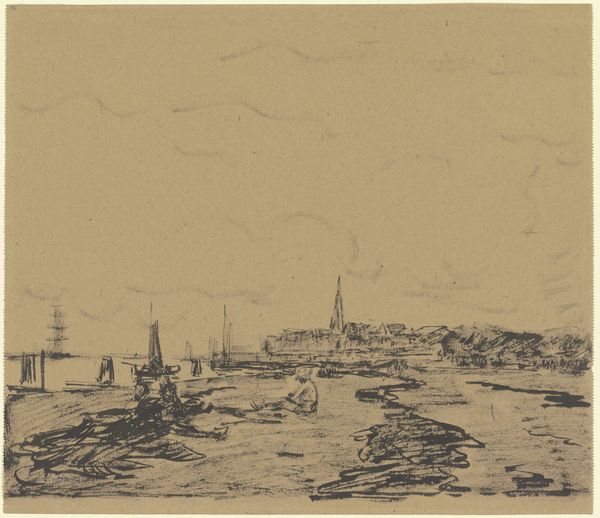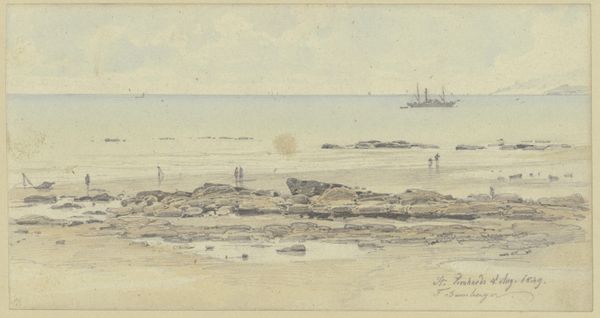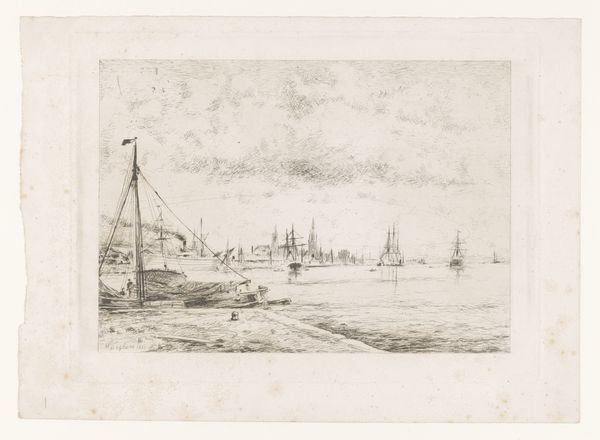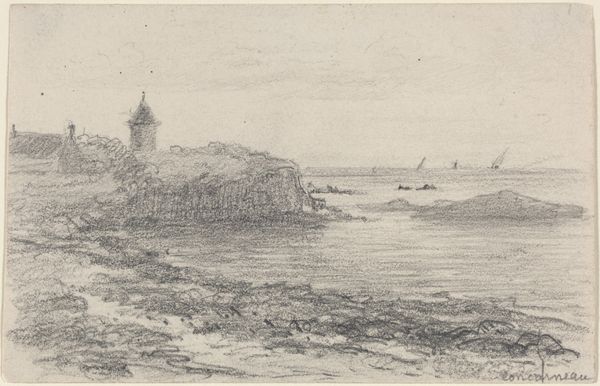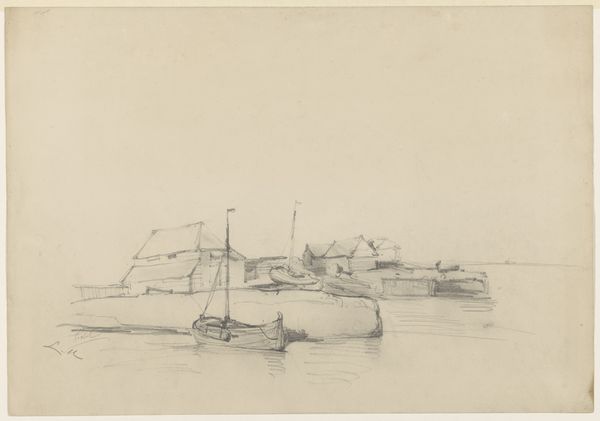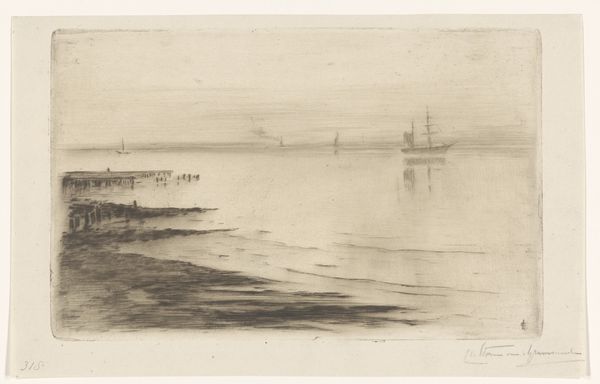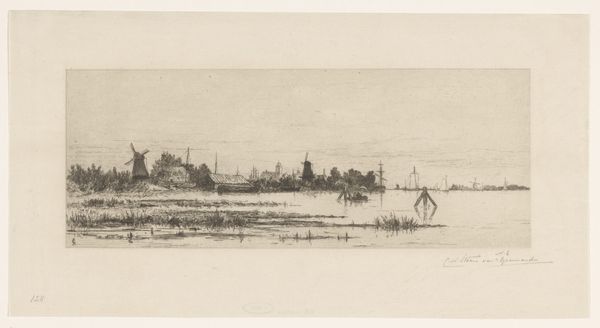
S. Pietro di Castello in Venedig, vom Giardino Publico aus gesehen 26 - 1862
0:00
0:00
drawing, paper, pencil
#
drawing
#
16_19th-century
#
landscape
#
paper
#
pencil
Copyright: Public Domain
Curator: Here we have a drawing entitled "S. Pietro di Castello in Venedig, vom Giardino Publico aus gesehen" or "San Pietro di Castello in Venice, seen from the Giardino Publico" created with pencil on paper around 1862 by Albert Emil Kirchner, here at the Städel Museum. Editor: It has an ethereal quality. Light shimmers across the water, and the architectural details almost dissolve into the pale sky. It feels dreamlike. Curator: Note how Kirchner employs a delicate, almost feathery touch with his pencil. Observe the carefully considered distribution of light and shadow; see how they model form and create depth in this cityscape. It is a wonderful example of compositional harmony. Editor: San Pietro di Castello used to be the cathedral of Venice. Looking at its dome, one immediately thinks of the connections with St. Mark’s Basilica, with its familiar domes representing power, divinity, and connection to the heavens, even though it’s captured in such a faint way here. Curator: Precisely. One can clearly see the artist's mastery in the use of line. It allows for both precise detail in areas like the shoreline architecture, and a soft atmospheric effect to give a sense of vastness to the open water. Editor: Also notice the boats along the shoreline; they immediately make me think of the Venetian Republic and the historic connections between Venice and the sea, wealth, trade and naval power, despite being almost ghosts of their real-world counterparts. Curator: Considering its linear simplicity, it offers an astounding level of visual information about the specific placement of elements along the horizon line, and is therefore both objective and representational. Editor: These quiet details really emphasize the idea of memory and tradition. It's more than just a depiction of Venice; it is Venice's story made tangible through these persisting visual symbols. Curator: Indeed, Kirchner invites us to consider the structure of what we’re viewing, but with emotional impact. The artwork provides more than meets the casual observer. Editor: Kirchner gives us not just a rendering but an encoding of the city. This sketch contains more than it seems at first glance.
Comments
No comments
Be the first to comment and join the conversation on the ultimate creative platform.
